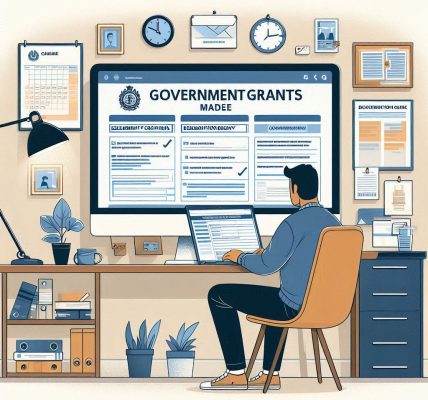The healthcare sector plays a crucial role in the well-being of any nation, providing essential services that directly impact public health. However, providing high-quality healthcare requires significant financial resources. Hospitals and clinics, especially those operating on a smaller scale or in rural areas, often face the challenge of securing adequate funding for infrastructure, technology, and personnel.
In response to these challenges, many governments worldwide have implemented subsidy programs to support hospitals and clinics. These subsidies are designed to reduce the financial burden on healthcare providers, enabling them to offer affordable, accessible, and high-quality services to their communities.
In this article, we will explore the various healthcare sector subsidies available to hospitals and clinics, explain how to apply for them, and discuss the importance of these programs in ensuring the sustainability and growth of the healthcare system.
Understanding Healthcare Sector Subsidies
Healthcare sector subsidies refer to financial support provided by the government to hospitals, clinics, and healthcare providers to help reduce their operational costs. These subsidies can take various forms, including:
- Direct Cash Grants: A one-time or recurring financial award to support specific healthcare initiatives, such as infrastructure development, purchase of medical equipment, or patient care services.
- Tax Subsidies: Tax reductions or exemptions that allow healthcare institutions to save money and reinvest it into improving services and infrastructure.
- Interest Subsidies on Loans: The government may offer low-interest loans or interest rate subsidies to healthcare providers to help them invest in new technology or expand their facilities.
- Subsidies for Infrastructure Development: Financial support for the construction, renovation, or expansion of healthcare facilities to meet the growing demand for healthcare services.
- Training and Development Grants: Support for medical education and training programs to ensure healthcare professionals stay updated with the latest advancements in the field.
These subsidies aim to alleviate the financial strain on healthcare providers, particularly those working with limited resources, to ensure that quality healthcare remains accessible and affordable to all.
Why Are Healthcare Subsidies Important?
- Improved Access to Healthcare: Subsidies help healthcare providers serve more people, including low-income individuals and underserved populations. This leads to better access to essential medical services for all citizens.
- Quality of Care: With financial support, hospitals and clinics can invest in advanced medical equipment, hire qualified staff, and maintain better facilities. This ultimately leads to improved healthcare outcomes.
- Encouraging Innovation: Subsidies encourage healthcare providers to invest in research and technology, which can lead to innovative treatments, improved patient care, and the development of more efficient healthcare systems.
- Supporting Rural Healthcare: Many rural areas lack adequate healthcare facilities. Subsidy programs aimed at healthcare development in rural areas help bridge this gap and improve healthcare accessibility.
- Financial Relief for Healthcare Providers: Subsidies reduce the financial burden on healthcare providers, allowing them to allocate resources towards improving their services rather than managing operational costs.
Key Government Subsidy Programs for Healthcare Providers
Various governments, both at the national and regional levels, offer different types of subsidies aimed at strengthening the healthcare system. Below are some of the most common subsidy programs available for hospitals and clinics:
1. National Health Service (NHS) Subsidies (UK)
The UK government provides extensive financial support to healthcare providers through the NHS. These subsidies are aimed at maintaining the quality and accessibility of healthcare services across the country. Subsidies include funding for hospital expansions, workforce training programs, and the purchase of new medical technologies.
- NHS Capital Investment Program: A program that provides funding for the renovation and construction of healthcare facilities across the UK.
- Workforce Development Fund: Grants provided to support the training and development of healthcare staff, ensuring that they are equipped with the necessary skills and knowledge to provide high-quality care.
- Technology Adoption Fund: Financial support to encourage healthcare providers to adopt cutting-edge medical technologies.
2. Healthcare Infrastructure Investment Programs (India)
In India, the government has implemented several programs aimed at improving healthcare infrastructure, particularly in rural and underserved areas. These include:
- National Health Mission (NHM): A government initiative that supports the improvement of healthcare services in rural areas through funding for health infrastructure, staffing, and essential medical supplies.
- Pradhan Mantri Swasthya Suraksha Yojana (PMSSY): This scheme focuses on setting up AIIMS-like institutions and upgrading healthcare facilities in the public sector, with funding for hospital infrastructure and medical equipment.
- Financial Assistance for Hospitals: The Indian government provides interest-free loans and grants for hospitals that are looking to improve their infrastructure, acquire medical equipment, or expand their services.
3. Medicare and Medicaid Subsidies (USA)
In the United States, the government provides substantial support to hospitals and clinics that cater to low-income and uninsured populations through programs like Medicare and Medicaid. These programs provide funding to healthcare providers in several ways:
- Medicare Funding: Hospitals receive funding from Medicare for providing medical care to elderly and disabled patients. This funding helps hospitals maintain financial sustainability while providing essential services to a large portion of the population.
- Medicaid Funding: Medicaid subsidies support healthcare providers who treat low-income individuals. This ensures that healthcare services remain accessible to those who cannot afford private insurance.
4. Subsidies for Rural Healthcare Providers (Various Countries)
Rural healthcare providers often struggle to secure sufficient funding due to lower patient volumes and financial challenges. Governments in many countries provide specific subsidies for rural hospitals and clinics, including:
- Rural Health Outreach Program (USA): This program provides financial assistance to rural hospitals to improve access to healthcare services, including emergency care, maternal health, and telemedicine.
- Rural Health Clinics (RHCs): In the U.S., RHCs receive financial support to expand services and ensure that rural populations have access to primary care.
5. Technology and Innovation Grants
Governments also offer subsidies aimed at promoting innovation within the healthcare sector. These grants are designed to support research and the development of new technologies that can improve patient care and enhance the efficiency of healthcare delivery.
- Health Innovation and Research Fund (Canada): This fund supports innovative healthcare projects that seek to address pressing health issues through technology, research, and new healthcare models.
- Digital Health Subsidies (EU): European countries offer subsidies to healthcare providers to encourage the adoption of digital health technologies such as electronic health records (EHR), telemedicine, and health information exchange systems.
How to Apply for Healthcare Sector Subsidies
Securing government subsidies for hospitals and clinics requires careful planning and adherence to application processes. Here are steps to help healthcare providers successfully apply for these subsidies:
1. Research Available Subsidies
Start by researching the subsidy programs available in your country or region. Many government websites, such as those of health ministries or departments, list the available funding opportunities. You can also reach out to industry associations and professional networks that may have information on applicable grants.
2. Ensure Eligibility
Each subsidy program has specific eligibility criteria. Check that your hospital or clinic meets the requirements outlined in the grant application guidelines. For example, certain programs may only be available to non-profit healthcare providers, while others may be focused on specific regions or healthcare services.
3. Prepare Detailed Proposals
Most subsidy applications require you to submit a detailed proposal. This should include:
- A clear description of your project: Explain what the funding will be used for, such as infrastructure development, purchasing new medical equipment, or improving patient care services.
- A budget breakdown: Provide a detailed financial plan showing how the funds will be allocated.
- Impact assessment: Outline how the subsidy will improve healthcare access, quality, or outcomes.
4. Collaborate with Partners
In some cases, healthcare providers may be required to collaborate with other organizations, such as research institutions or non-profit groups. Partnering with other entities can strengthen your proposal and demonstrate a broader impact.
5. Submit Your Application on Time
Once your proposal is complete, make sure to submit your application before the deadline. Late submissions are often disqualified, so it’s important to plan ahead and ensure all documents are prepared in advance.
6. Follow Up and Provide Progress Reports
After submitting your application, it’s important to stay in touch with the funding agency and provide any additional information they may request. If you are awarded the subsidy, be sure to follow up with progress reports to demonstrate how the funds are being used and the impact on your healthcare services.
Conclusion
Healthcare sector subsidies are vital for ensuring that hospitals and clinics can continue to provide quality care while keeping costs manageable. With government support, healthcare providers can expand their services, adopt innovative technologies, and improve access to healthcare for all citizens, particularly in underserved areas.
By understanding the available subsidy programs and following the right application processes, healthcare providers can secure the funding they need to meet the evolving demands of the healthcare system. Whether it’s for infrastructure, workforce development, or technological innovation, government subsidies play a crucial role in ensuring the long-term sustainability of healthcare institutions and, by extension, the health of the nation’s population.




